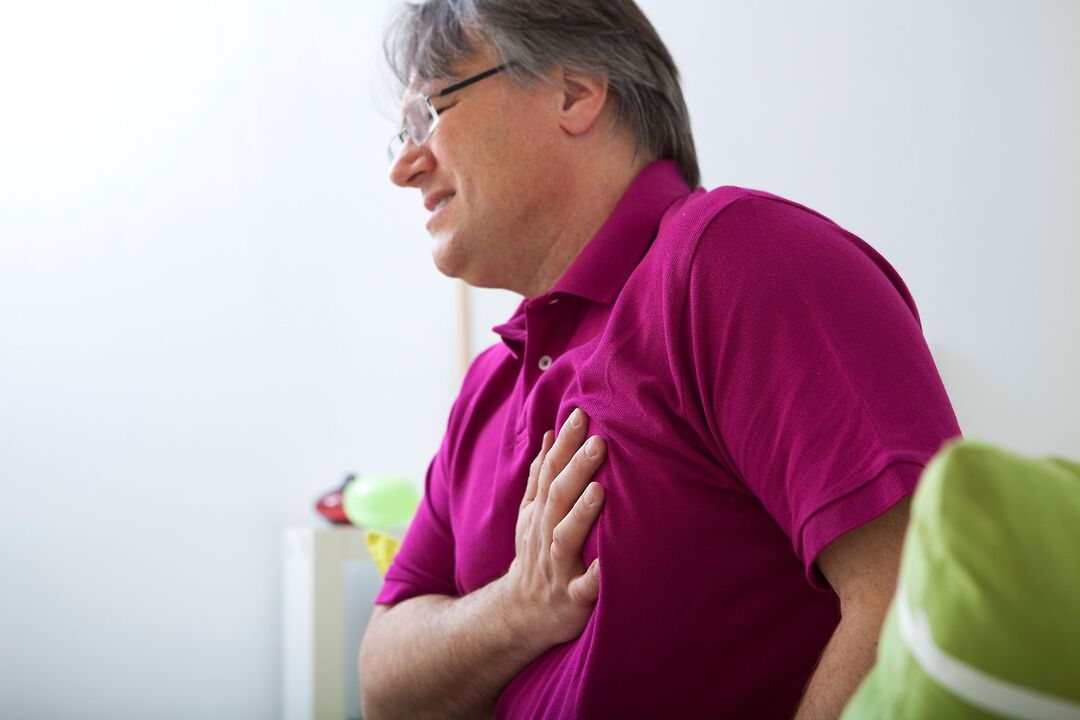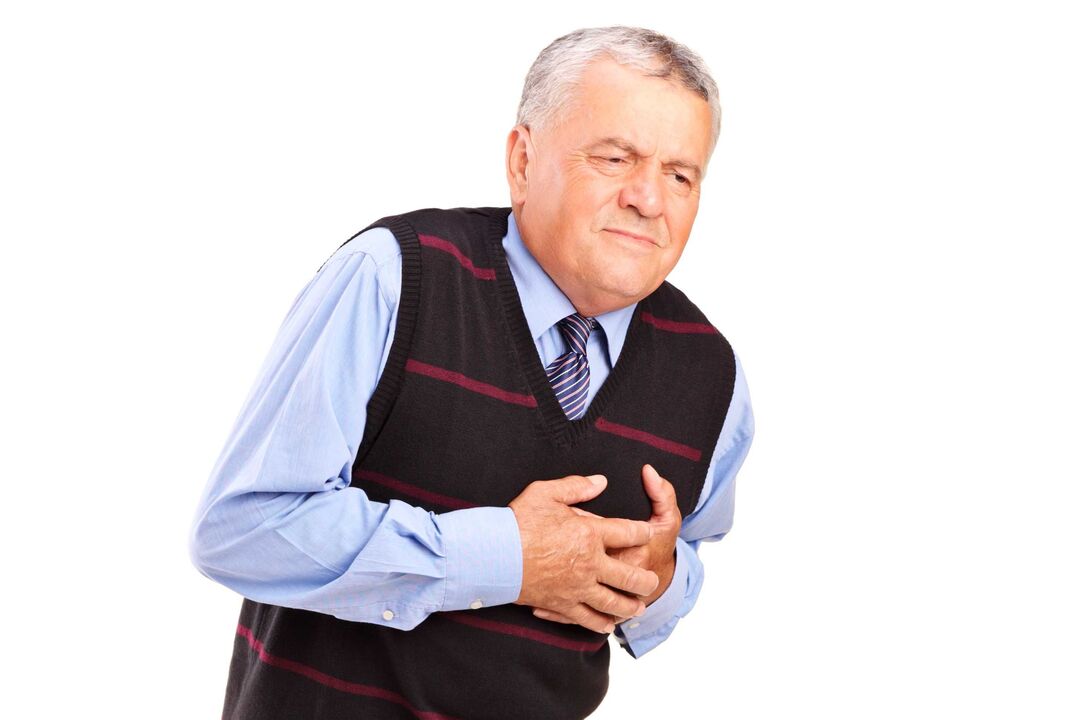
The human spine is one of the most important components of the musculoskeletal system, and violation of its normal functioning always has negative consequences for the whole body. Chest osteochondrosis refers to degenerative-inflammatory diseases of the spinal plates in the chest region. The disease most commonly affects people over the age of 55, but it can occur in any adult. Half as many men register the disease as women.
In general, although the class consists of the largest, 12 vertebrae in the middle of the spine, it is less prone to pathologies. This is due to less mobility and good protection of the muscular corset. This feature of the structure is a positive factor, but it is difficult to identify in the diagnosis of osteochondrosis of the thoracic region and can be confused with other diseases for a long time, especially when there is temperature.
There are criteria for the 10th revision of the International Classification of Diseases (ICD-10), according to which osteochondrosis belongs to the class of dorsopathy (M40-54). ICD-10 has a separate class for osteochondrosis of the spine - M42 according to ICD-10 and is equivalent to deforming dorsopathies. The diagnosis of youth M42. 0 ICD-10 code and adult osteochondrosis M42. 1 Set up according to ICD-10 code. The M42. 9 ICD-10 code may occur with unspecified pathology.
The reasons
Chest osteochondrosis is less common than lesions in other parts of the spine. Many people do not seek medical help for a long time, thinking they have a different pathology. According to statistics, this leads to the detection of the disease in the most advanced form.
The disease is caused by damage to the nutrition and blood supply to the intervertebral discs. The development of osteochondrosis can lead to disruption of the normal structure of the vertebrae. The elasticity and damping properties of the spine are lost, all of which leads to the failure of the discs, tapes and other structural elements. As a result of such disorders, the nerve roots become pinched and unpleasant symptoms occur.
It is almost impossible to find out the exact causes of the pathology. There is a risk group between people and the predisposing factors for the disease. As for the people themselves, this age is over 55. The presence of female gender and spinal diseases increases the risk of disease. Abnormalities such as scoliosis and kyphosis violate the posture and normal arrangement of the spine over time. Consequently, the metabolic processes in the spine are disrupted and chondrosis is formed.

There are factors that depend directly on the person and that lead to pathology. We highlight the main ones:
- overweight;
- abuse of bad habits: alcohol, smoking, fatty foods;
- sedentary lifestyle.
People who spend a lot of time sitting down are prone to the disease. This applies to office workers, seamstresses, operators, drivers. A person with a back or spinal cord injury should also be careful in the future. There is a group of people with inherited or acquired diseases who are prone to diseases of the musculoskeletal system. The main conditions are diabetes, muscle weakness, disruption of the normal functioning of the glands.
Types and clinical picture
Signs of osteochondrosis of the thoracic spine depend on the degree of pathology and neglect of the process. Overall, four stages of the disease are distinguished.
In the first degree, the elasticity of the intervertebral discs is violated and their height is reduced. The symptoms of pain are not as sharp and go away quickly at rest. Basically, the pain is felt in the middle of the back and in the chest. Often, the disease becomes dormant and clinical manifestations occur only during exacerbation, and are rapidly arrested and treated. Signs of poisoning are rare, sometimes the temperature may rise and weakness may occur. The temperature returns to normal as the acute period passes.
Grade 2 is more dangerous and can cause severe neurological symptoms. With this degree, the height of the spinal discs of the spine is constantly reduced, and the elasticity is broken. The fibrous ring of the intervertebral disc may be damaged and a crack may form. This stage is fraught with the risk of developing intervertebral hernia.
The chest and back pain gets stronger and eventually spreads to the adjacent area. Acute pain occurs during deep breathing or sudden movement. When nerve endings are damaged, symptoms spread along the ribs. Elevated temperature during exacerbation, general weakness. This level of disease is accompanied by a feeling of numbness and creeping "goosebumps" at the site of the lesion. If the nerve fibers are damaged, normal innervation of the upper or lower limbs causes disturbance.
Osteochondrosis of the third degree thoracic region is characterized by the onset of intervertebral hernia. Severe pain occurs under certain conditions. The pain can often intensify at night when you are in a cold, body position for a long time. Pain in the chest, back, along the ribs. If you come into contact with the spinal cord, the following symptoms may occur:
- violation of the innervation of the legs and arms;
- increased pain at night;
- pain in the esophagus, right hypochondria, stomach;
- increased body temperature;
- problems with the normal functioning of the gastrointestinal tract.

In the last, fourth stage, the bone tissue of the spine is destroyed. The mobility of the vertebrae is impaired and the damping properties are reduced. Chest osteochondrosis is dangerous at this stage due to damage to the spinal cord and impairment of human performance. In case of aggravation, the body temperature rises and there is severe pain in the chest, in the middle of the back.
There are two main symptoms that can be distinguished from the general clinical picture - dorsago and dorsalgia. Dorsago is characterized by sharp chest pain. The man has a feeling in his chest that he is in a position for a long time. During a seizure, breathing becomes difficult and the pain intensifies with the lateral movement of the torso. This condition increases the temperature.
In dorsalgia, there is mild pain in the area of the injured vertebrae. The symptoms of the pain worsen and last for up to three weeks. The pain is exacerbated by deep breathing or exhalation and movements. Symptoms worsen at night and walking is relieved. 10th Revision of the International Classification of Diseases (ICD-10) Separate M54. Assigns 6 codes to dorsalgia with chest pain.
Diagnosis and treatment
With the right approach, identifying chest osteochondrosis is not difficult. The most important thing is to make a differential diagnosis of cardiovascular pathologies and to rule out other diseases. The presence of specific pain, fever, and neurological disorders increases the physician’s doubts.

The main diagnostic method is radiography. Not only should an image be taken of the injured department, but neighbors should also be recorded to rule out complications. If a complete examination of the spine is impossible and tissue and vascular damage is suspected, computed tomography and magnetic resonance imaging are prescribed.
Chest osteochondrosis is treated in most cases by conservative methods.
The most important thing in the treatment is the complexity and the individual approach.
Depending on the extent of the pathology, a home treatment regimen or hospitalization is also possible. In any case, certain principles must be applied - it is a gentle load regime, limits weight lifting and exercise, prevents overwork and strictly adheres to the doctor’s recommendations.
Chest osteochondrosis is an acute period of the disease when there is pain, fever, bed rest. In the presence of pain syndrome and temperature, NSAIDs and painkillers are prescribed. Maybe a combination of ointments, physiotherapy and massage. This combination allows you to quickly fight the disease and recover.
The basis for the treatment of osteochondrosis is the local effect. Manual therapy allows the placement of vertebrae, massage, physiotherapy (electrophoresis, ultrasound, magnetotherapy) and reflexotherapy can restore nutrition. It is important for both men and women to perform therapeutic exercises and adhere to treatment regimens.
In case of complications, traction or even surgery may be required. Otherwise, symptomatic therapy is used.























